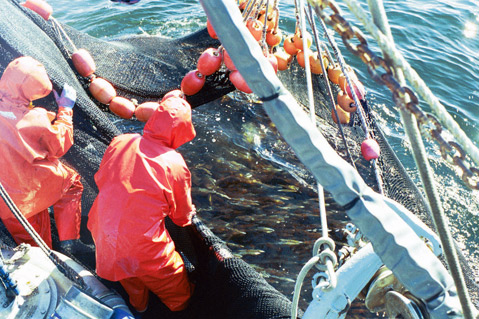Boom Times for Squid Fishery
State's Most Lucrative Commercial Fishing Enterprise Hit Limits Early Once Again

For the fourth year in a row — and with the fastest time ever since modern regulations began in 2005 — California’s squid-fishing fleet (pictured) hit its annual limit early, with the more than 100 permitted boats landing about 118,000 tons of the slimy species known as Doryteuthis opalescens by October 18, nearly six months before the season ends on March 31, 2014. Much of that haul came from boats working the Channel Islands and Gaviota Coast with bright lights at night, when it’s easiest to snag the squid as they spawn near the shoreline. From there, the Southern California boats deliver their loads to processing centers in Ventura, Port Hueneme, and San Pedro, which then freeze the squid and ship most of them to China. Together with the squid fishers up north in the Monterey Bay, the industry rakes in about $70 million annually.
“They’re the most valuable fishery in the state of California,” said Diane Pleschner-Steele, the Buellton-based director of the California Wetfish Producers Association, which represents commercial fishermen who catch squid, mackerel, sardine, and anchovy. “This was an unusual year. They were spawning way early and everywhere at the same time,” she explained, noting that her association’s research revealed more young squid in August than they usually see in the peak winter season. “It’s a phenomenon we haven’t seen before.”
Another twist this year was that the fishermen and processing centers were enlisted to help track the catch, filing reports daily so that the California Department of Fish and Wildlife would know how much fish was being harvested and wouldn’t shut the season early, as had been done in years past. “We were able to help the department and also maximize the value of the fishery,” said Pleschner-Steele, whose association spearheaded the unique relationship and one day hopes for electronic tracking. “It’s an uncommon partnership.”
But as much as squid fishermen relish these good years, they know the slow ones are only around the corner, as these “wetfish” species — so named because they were historically processed and put into cans while still wet — come in cycles. “Each resource has its ebbs and flows of abundance,” said Pleschner-Steele, “so you gotta make hay when the sun shines.” Next year’s season kicks off on April 1, 2014.



